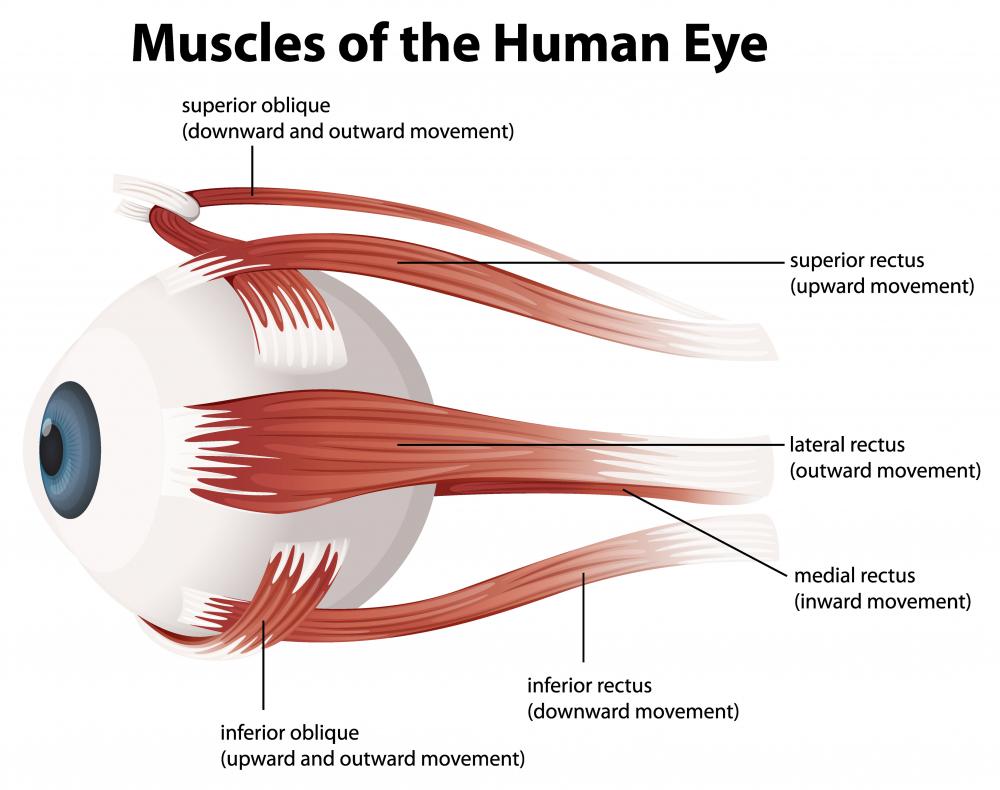At WiseGEEK, we're committed to delivering accurate, trustworthy information. Our expert-authored content is rigorously fact-checked and sourced from credible authorities. Discover how we uphold the highest standards in providing you with reliable knowledge.
What are the Extraocular Muscles?
Extraocular muscles are the muscles found in the vicinity of each eye which are essential in controlling eye movements. There are six muscles responsible for the different movements of both eyes. They are the lateral, medial, inferior, and superior rectus, and the inferior and superior oblique muscles. Each one of these extraocular muscles has specific functions which allow each eye to move in certain directions.
The medial rectus directs each eye to move inward in the direction of the nose. This movement is termed adduction, which means the movement is directed inward or toward the nose. The lateral rectus, on the other hand, performs just the opposite action. It directs each eye away from the nose, moving it outward. Abduction is the term often used for the outward movement of the eye.

The superior rectus muscle is mostly responsible in the movement of the eyes upward, in what is termed elevation. It also helps in rotating the top of each eye in the direction of the nose, or intorsion. The inferior rectus muscle performs the opposite movements, such as mostly directing the eye towards the floor, or depression, and also rotating the top of each eye away from the nose, or extorsion. Both extraocular muscles also help in adduction of the eyes.

The superior oblique muscle is primarily responsible for intorsion of the eye. Some of its actions include depression and abduction movements of the eyes. The inferior oblique muscle performs primarily in the extorsion movement of each eye. Other actions include elevation and abduction.
Each of these extraocular muscles are stimulated by cranial nerves. The oculomotor nerve innervates the medial rectus, inferior rectus, superior rectus, and inferior oblique muscles. The abducens nerve stimulates the lateral rectus, while the trochlear nerve acts on the superior oblique muscle of the eyes. Injury to any of these nerves can cause paralysis or palsy of the related extraocular muscles. The symptom most commonly seen in cases of extraocular muscle paralysis is double vision, or diplopia.

The central nervous system coordinates the movements of both eyes, allowing them to look in the same direction. When the left eye moves outward, the right eye usually follows that direction by moving toward the nose. Movement of the eyes in the same direction is called versions. Vergence are eye movements that follows the opposite direction, such as in convergence, where both eyes are directed towards the nose.
AS FEATURED ON:
AS FEATURED ON:















Discuss this Article
Post your comments